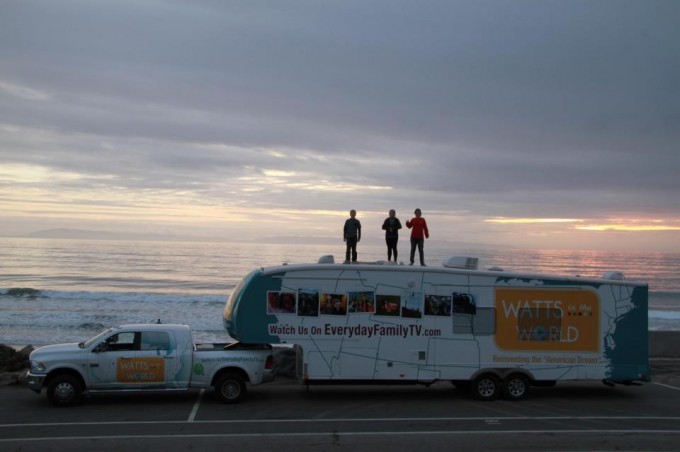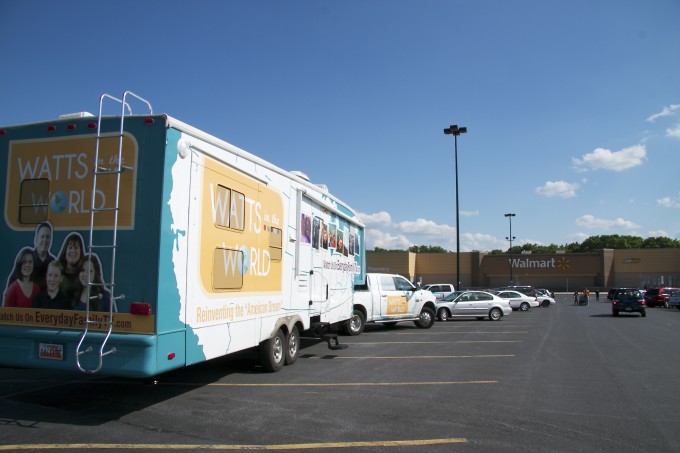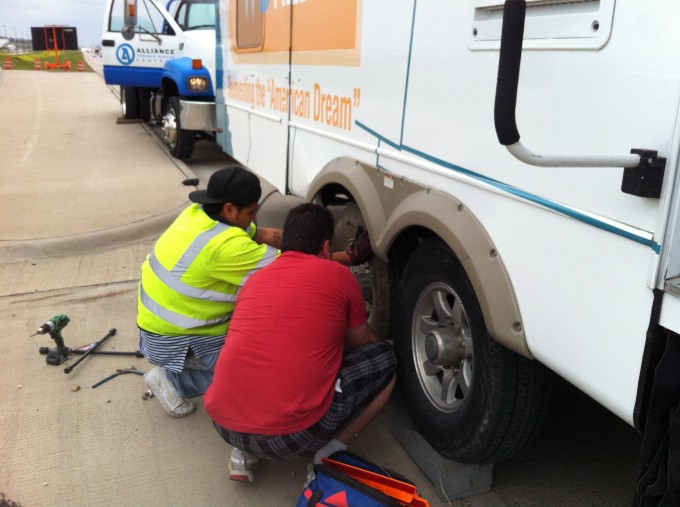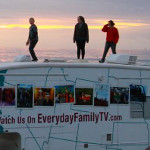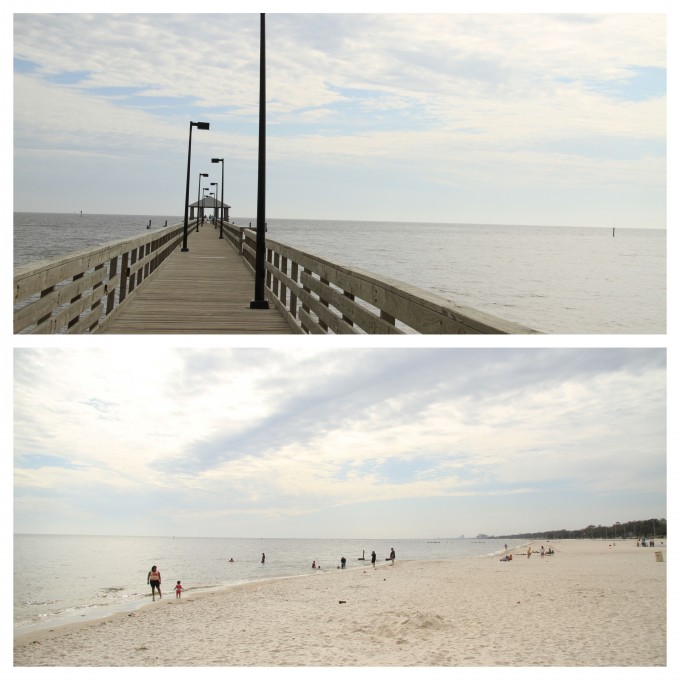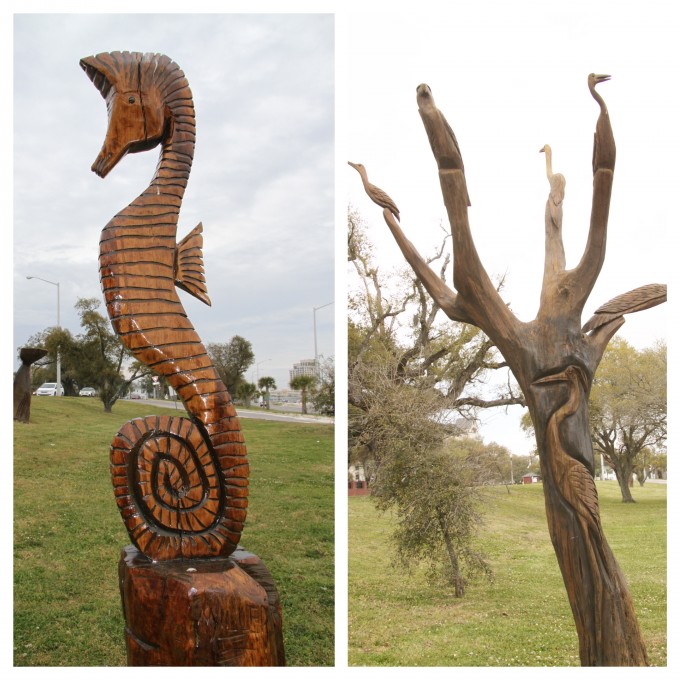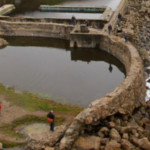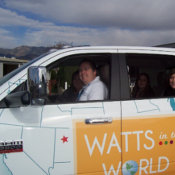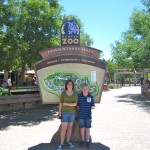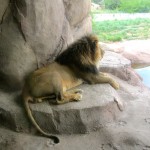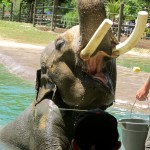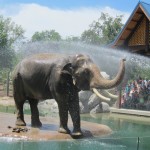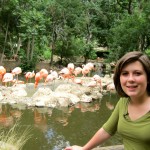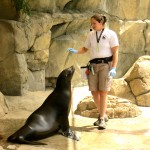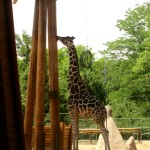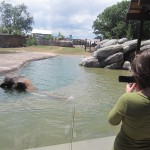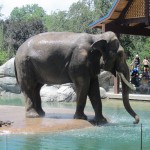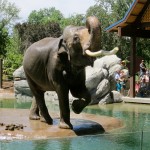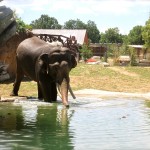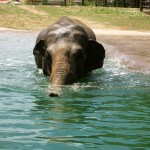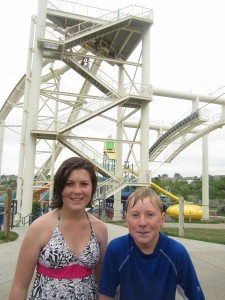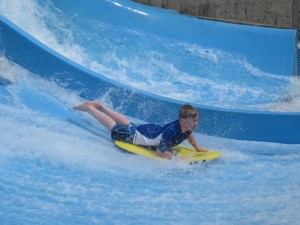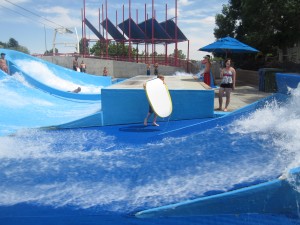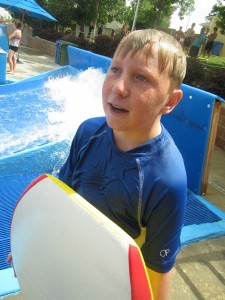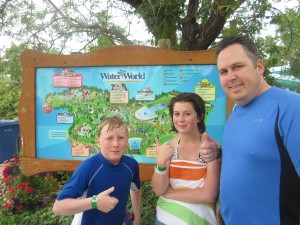Things I Never Did Before Travel
Travel opens up numerous opportunities to explore new lands and new parts within ourselves. Each new adventure we embark on changes us in small ways. I’ve been mentally cataloging some of the ways our family’s small, daily tasks have been altered by full-time RV travel. Life inside a rolling 36 foot box can’t, and shouldn’t be, the same as living in a bricks ‘n sticks back home.
Here’s just a few of the things I’ve been reflecting on this week.
Before travel I never:
Thought about Finite Resources-
Of course when I lived in a house I tried to be mindful of how much energy or water I was consuming so that I didn’t have to pay a high utility bill, but I never thought about it in terms of their being a limit to it. The RV has a finite amount of water it can hold, and electricity is only available if we buy it (stay at an RV park) or run our gas generator, which we can only store a few gallons at a time.So we quickly became aware of how much we use on a daily basis and we’ve grown accustomed to the quirky changes our daily routines have made.For example:
- Amps have their limits. Usually we have to turn off most the lights to run the microwave or blow dry our hair. AC won’t work off a battery. I know more about kilowatt usage, and acceptable power payloads than any other mom I know.
- Water is precious commodity- 5 showers and 1 round of dishes will completely fill up our grey tank, so sometimes we shower every other day to stretch out our water tanks. Every time we wash our hands or flush our toilets, we are consciously aware that we are that much closer to needing to find a dump/fill station.
- Free wifi is a premium-We try to only use our portable WiFi hubs for work or online school, so we are constantly on the hunt for free wifi we can use for recreational surfing, watching TV online, etc.
- Laundry- Machines aren’t always available, so we can’t just throw a load in whenever. We’ve learned to wear things more than once, or make sure it is indeed dirty before haphazardly throwing it in the dirty clothes basket.
- Sewage. Not a pretty subject, or something I ever thought about back home. I just knew when I flushed it went off to some faraway place that I never had to worry about it. Now that we are in charge of disposing of it in designated places, we’ve become keenly grateful of modern plumbing, and empathetic of those who live in worse sanitation circumstances than this.
Used public resources regularly
Living in a traditional home we are more autonomous and self-contained. Being on the road we’ve needed to rely on outside resources to get some of our needs met.
- laundry mats- Never used them before, but are a great way to get 6 loads done at once. Not as scary as I’d perceived, and met some really nice people in them.
- parking lots- Didn’t realize people slept in store parking lots, or that I’d be joining them several nights each month.
- campground showers- Showering in a public bath house would’ve been at the very bottom of my comfort list before full-time travel. But now, it’s the only time I get to linger in hot water and take the time to shave my legs. (remember the limited RV water?)
- library- Sure I went occasionally to pick up books for my kids, but I never hung out there. Now, we frequent them in order to get school work done or print stuff off the computer.
- Chain stores-(starbucks- B&N, Apple store, McDonalds) Once again I’d only visit these placed if I had something specific to buy, but now they are staples in our weekly schedule as they offer free wifi and it’s sometimes easier to spread the kids out in a more spacious environment, and let them tackle their work load. They’ve become good at self-monitoring their learning and schedules.
An unexpected side benefit of our travels is that I believe these experiences have made them more adaptable and resourceful perhaps than their same-aged counterparts. When the time comes I’m confident they’ll be ready for college, missions, voluntary service, marriage, travel and whatever the future holds for them.
Grateful for the really small things
- Quarters- I never gave a second thought to loose change before now, but quarters have become a precious commodity in our household. Between laundry and toll roads, quarters pass through our hands like water. Finding one in my the bottom of my purse is as delightful as discovering a treasure chest.
- Streets w/o low branches- Visually, I love driving down tree-lined streets and basking in the beauty of the mature trees. As co-pilot of a 13 ft. tall vehicle, it can be a nightmare navigating through streets riddled with low hanging branches that are begging to rip through the roof of the RV. I thank the heavens every time we turn down a residential street that’s open and clear.
- Towns w/o low bridges- Growing up in the Southwest it’d never occurred to me that low bridges would become my biggest nemesis once we crossed into the Mid-west and East coast. Most of our travel nightmares have been caused by low bridges, so I say a silent prayer of gratitude in each city we don’t have to worry about clearance issues.
- Tires- They are an unglamorous part of any vehicle, but the work horse in any situation. We’ve put ours through a lot- Numerous surfaces, weather conditions, and situations. Usually they come out ok, but after 23, 000 miles, 4 flat tires and a cracked rim, I’ve come to appreciate and think about them more now than ever before. Tires are my friends!
These are just some of the ways my awareness levels have been raised through our travels. Each adjustment has brought it’s own teaching moment, and I’m grateful for what traveling has taught me and given my family.
What are some things you’ve done, or do now, that you never did before traveling? I’d love to hear your responses!
Why Biloxi caught me by surprise…
What I didn’t realize about Biloxi…
During our fabulous stay in New Orleans this spring, I noticed that Biloxi was only 90 miles away. With not much information except that the Gulf Coast is considered the “Playground of the South”, we took a spontaneous road trip to the state next door. While we were there, we quickly realized there’s a lot to see and do in Biloxi, and it’s a great place to visit with kids.
Here are just a few things that caught our eye when we were there. We will definitely go back and explore more.
Why the Arizona Meteor Crater Rocks…
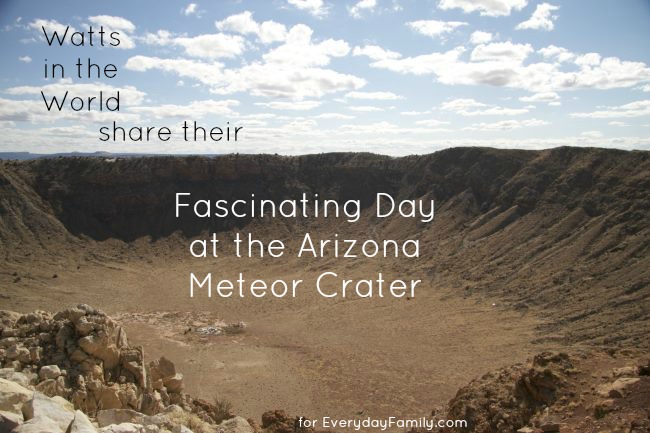
The Barringer crater been touted as “The best preserved meteor crater on earth”, and I hoped my kids would find it a worthwhile stop. Luckily the weather held out and we were able to visit northern Arizona on one of the few weeks it wasn’t snowing in February.
Admission tickets get you access to not only the meteor crater impact site, but to a guided tour along the rim as well. Our guide, Eduardo, was funny, friendly, and very knowledgeable about the crater and surrounding area. He made the tour interesting as well as educational. continue reading
Road Trip Tips for Traveling with Kids
Going on a Road Trip soon?
Here’s some ideas on how to pass the time
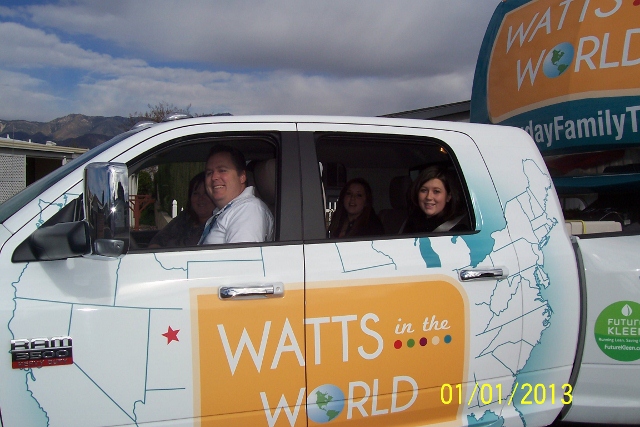
One of my favorite aspects of family travel is the time we get to spend together in the truck when we travel between destinations. Technology has transformed road trip activities since I was a kid. While we are well equipped with iPads, iPods, cell phones, laptops, and almost every other electronic to keep our teens entertained and not asking, “Are we there yet?” I’m actually trying to limit the amount of time they are “plugged in” while we are on the road.
It would be easy to let each kid use an electronic device to escape into their own private world, and not interact until we arrive at the next stop, but this trip is about more than just the destinations we are getting to. It’s mainly about the family time and connections we can create while spending this time together.
Here are a few ways that we attempt to navigate the road without the kids being lost in their own “electronic bubble”.
1. Turn off & talk The times we turn off the radio and strike up a conversation with the kids have been so rewarding. The silence gives us the opportunity to ask questions about what they’re learning-thinking-feeling about a variety of topics. Sometimes they’ll ask us questions about our childhood, etc. We’ve had some great discussions that I’m not sure we would’ve had otherwise if we weren’t spending this much time in a vehicle together. Every time you are in a car with your children is an opportunity to connect.
For the rest of my tips CLICK HERE
Our visit to the enchanting Hearst Castle
14 Fascinating Facts about Hearst Castle

I have a confession. I was born and raised in California, and I’d never visited the iconic Hearst Castle before I moved away 6 years ago. Since our travels are taking us down the Pacific Coast Highway, I was determined to stop in San Simeon and visit the legendary home of the extravagant media mogul, William Hurst. What I didn’t realize is how fascinating of a story his life, and his home would be.
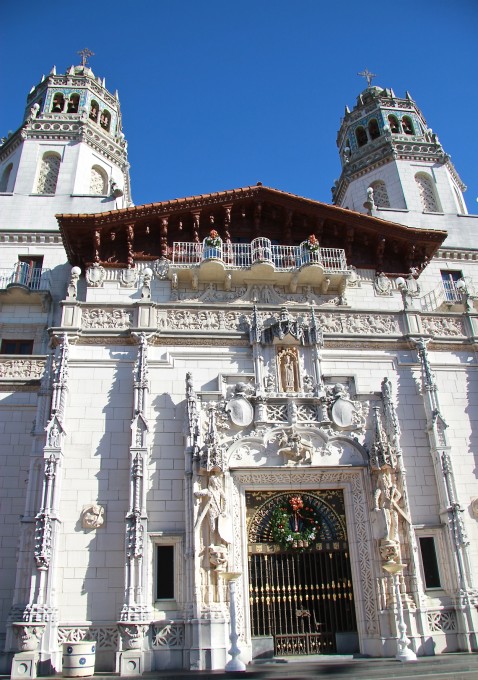
The visitor center and tour guides have so much information available, there’s no way to take it all in in just a day. Here are just a few of the facts I found fascinating about Hearst Castle.
- He was an avid art collector, and his passion was inspired when his mother took him to Europe for 18 months when he was a boy. His collection is worth millions today, one piece is worth $10 million just by itself.
- Much of his collection was acquired after WWI when European towns were selling off parts of buildings that were damaged in the war. He was the largest single collector outside of museums.

- He picked the spot on the hill to build the house because his dad used to bring him up there as a child on horseback, and it’s his favorite piece of the 250,000 acres he inherited.
- He hired Julia Morgan, one of the 1st women architects of her time, to design the house with him. They worked together for 28 years.
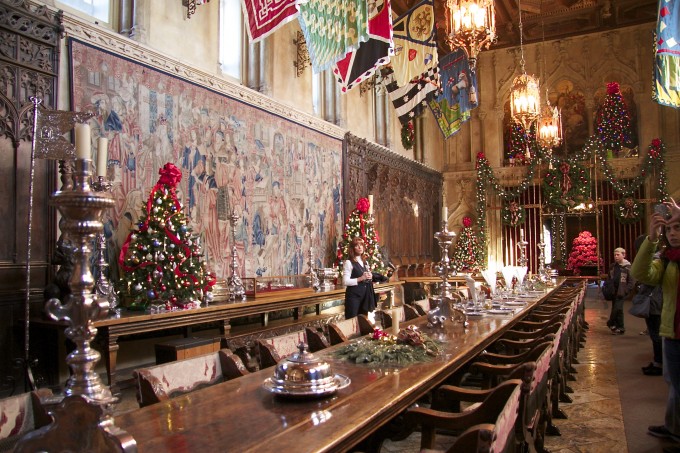
- The house was never completed. One part or another was always under construction. The house still remains unfinished today.
- He preferred the quiet life of the ranch over “ high society”, but he had his newspapers flown in everyday from L.A. He had an airstrip built, and it remains still today.
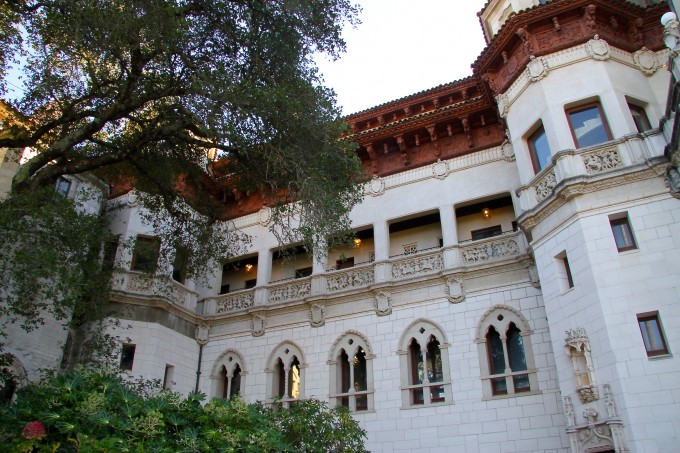
- The house cost around 10 million to build, which is surprisingly lower than it looks with all the details and original structures he had shipped over from other parts of the world, and how many times he had things torn down and redone.
- The Neptune pool was ripped out and redone 3 times. It now holds almost 350,000 gallons of water, and has real Grecian ruins surrounding the perimeter.
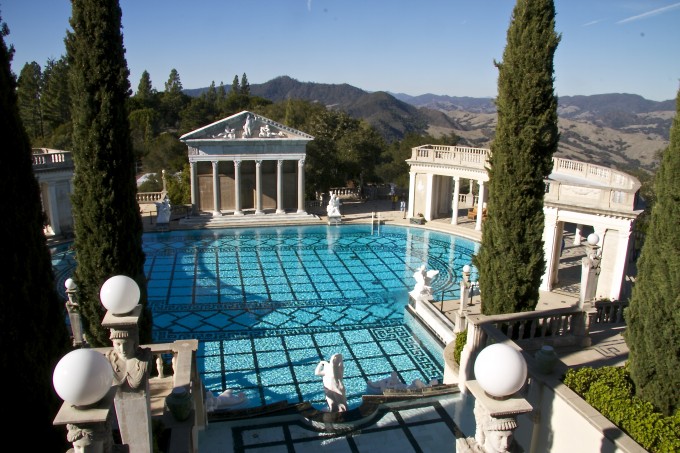
- There are 3 large guest houses on the property. He lived in one during the construction of the main house.
- He had 10 large homes all over the world, this wasn’t the biggest.
- The temperature can change up to 50’ from the coastline up to the top of the mountain. In the summer the coastal fog creates cool temperatures at the visitors center, but once you take the ride above the clouds to the main house on the hill, it’s hot and averages 20-30’ degrees warmer.
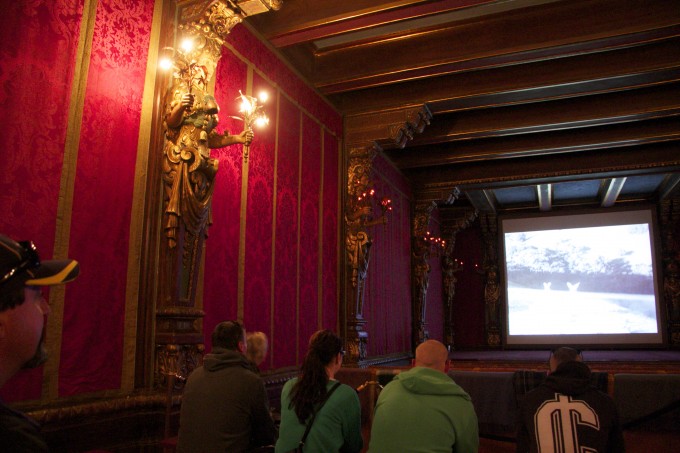
- The surrounding grounds are still a working ranch that the Hearst family owns. Although a big portion was donated to the state of California, it still remains one of the largest ranches today.
- The house was donated to the California State Park system in 1952. Hearst had moved out about 4 years prior due to ill health, and it remained empty for a number of years. Instead of selling off the estate in pieces, the family preserved it by working with the state of California park system.
- There was a zoo on the property. In fact, in it’s prime, it was the largest privately owned collection of animals in the country. The animals were sold off long ago, but the zebra were released on the land, and some of their descendants can still be seen mingling among the cattle on the ranch today.
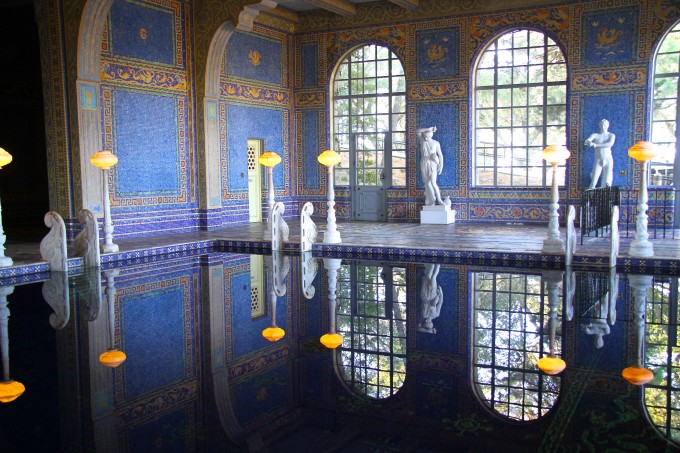
We only got to spend one day at the castle, and we could’ve easily spent a few more and still not get the full impact of Hearst’s legacy. However, I was very pleased at how much we learned in our short visit there. The visitor center has a very educational, entertaining IMAX movie about his life, which gave us a lot of context before we actually toured the house. The tour guide packed a lot of information into our 45 minute tour as well. As we toured the grounds, there are docents posted around the property, ready and willing to answer your questions and give you more detail into the history and legacy of the home and the man.

VISITOR TIPS:
1. Reserve your tickets in advance. Each tour is limited in the number of people that can go up the hill on the bus, and in peak seasons tickets might be sold out.
2. Go early in the day before the crowds swell and the weather gets hot.
3. The temperature can change dramatically, like I mentioned earlier, so dress in layers. Wear sunscreen and bring sunglasses or a hat as most of our time will be spent walking the grounds outside.
4. Bring your own food or snacks if possible. You can’t eat at the castle, but you can at the visitors center. They have some good food options there, but it’s pricey, like most tourist destinations.
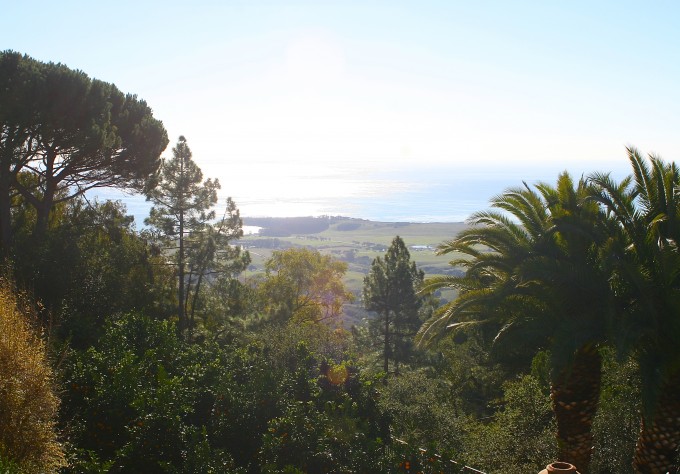
If you’d like to know more history on the Hearst Castle, you can check out the Facts & Stats page.
A tour of the castle is a great blend of education and entertainment, making it a perfect family destination.
So the next time you are in central California, make sure to put Hearst Castle on your list of places to visit.

10 Reasons to Travel NOW with your Kids
We often get asked why we are uprooting our lives and traveling the country for a year. There are too many reasons that I can’t put them all in one short answer, so I usually pick only one, and it’s based on who is asking the question. I want people to relate to why we are choosing travel to strengthen our family so I’ve decided to give you 10 reasons to travel with your kids in the hopes it will encourage you to choose to travel more with your kids, because with 10 reasons, how can you say no?
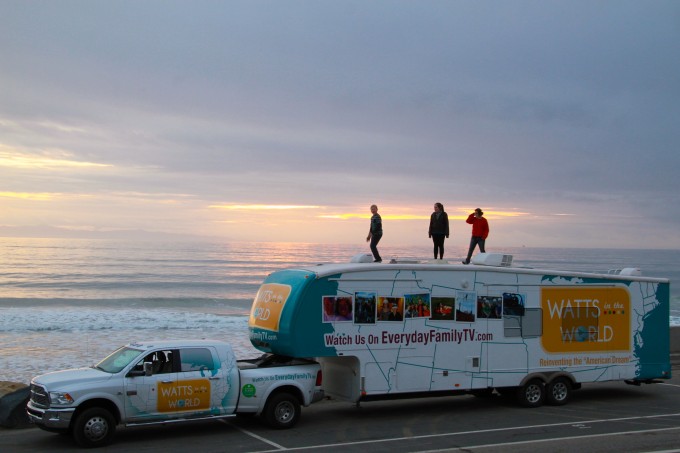
1. Family Bonding
The average household spends 3 hours or less together each day as a family. We are an over- scheduled, stressed out society that tend to live parallel lives under the same roof, not a close knit family unit. We want more than that. Spending most of our days and nights together will be a struggle sometimes, but overall I know it will bring us closer together. Our lives will become intertwined in a way that can’t be unraveled.
2. Expanding Horizons
I took a gap year in college and lived in Italy doing service work. That experience expanded my horizons and shaped much of who I am today. When kids get the chance to see other places and cultures, it opens up opportunities for ideas they’d never thought of before. It can shape their career choices, lifestyle and where they chose to live.
3. Truth & Tolerance
Despite how progressive we think we are in 2012, we as a collective society, still struggle with stereotypes. Travel exposes us to the truth about cultures, regions and ethnicities, wherever we go. The quickest way to teach our kids tolerance is to expose them to others’ traditions and focus on our commonalities, not our differences.
4. Life Skills
There are tasks that my kids would probably never learn if it weren’t for this trip. From maintaining an RV, to interviewing people and editing video, my kids are learning valuable skills that they wouldn’t have had the opportunity to without full-time travel.
5. Money Matters
Traveling has become a great teacher about money. My kids are learning about family finances on the road, and how to budget their allowance. They are learning to live on less, and distinguish between “wants” and “needs”.
6. Increased Health
We are using travel as an opportunity to taste other cuisines and eat healthier. Our busy lives at home were an easy excuse to not exercise, and eat out often. Now we are cooking at home and walking everywhere we can.
7. Real Education
Learning history in school is just theoretical knowledge of dates and facts. Being able to experience and walk around historical landmarks will bring history alive and make it relevant to my children’s lives.
8. Independence and Free Thinking
I want my kids to think for themselves, and not follow “the norm” because it’s what everyone else is doing. Travel has definitely taken me out of my comfort zone, and makes me face my fears. It challenges the “status quo” in my life and makes me think at higher levels than I’ve had to in the past. I want it to do the same for them as well.
9. Charity & Goodwill
Service work can be done in your hometown. You can give to charity simply by writing out a check; you don’t need travel to be effective. What I want is for my kids to see the goodwill and humanity of strangers who will go out of their way to help others. A fellow traveler shared via Facebook that they were explaining their adventure to someone while they were filling up their RV with gas. The stranger was so touched by their story that he bought them 10 gallons of gas and wished them luck on their journey. That’s the human spirit at its best.
10. Spirit of America
I desperately want to travel to far off countries, but I feel impressed to start with our own country first. Travel in your homeland builds nationalism, and gives children a sense of where they came from. The U.S. has had some tough years, and I want to recapture the Spirit of America and what makes it great. That spirit will be found in the people we meet and the experiences we have as we travel through this great land.
As you can see, I’m passionate about how travel can enhance your family’s life and give you valuable experiences. I know extended or full-time travel isn’t for everyone. I’m simply encouraging you to do more of it. Hold off on buying that new big screen, or upgrading your car, and plan a family trip instead. Get lost in some small or grand adventure. Only then will you feel truly found.
Do you enjoy traveling with your children? Have you found ways to incorporate teachable moments into that travel? We’d love to hear your comments below!~
The Sutro Bath Ruins of San Francisco
Exploring Nature in the Big City of San Francisco
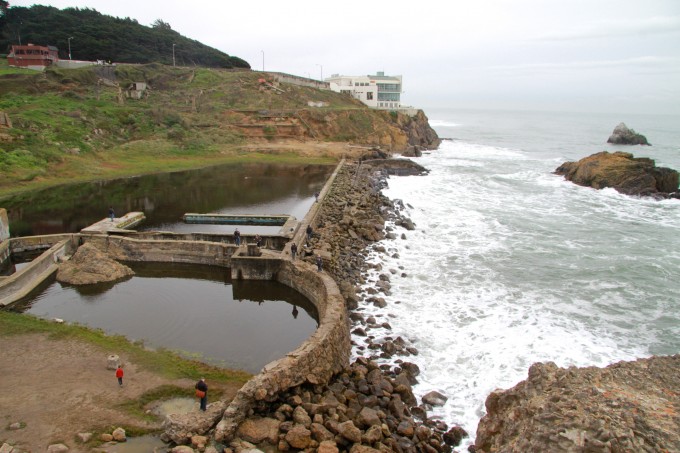
If you’re like me, you like to explore out of the way places, along with some of the popular tourist attractions. This helps give us a more rounded approach to any place we visit. While in San Francisco we contacted a photographer friend who lives just outside the city. Before driving us through downtown San Francisco, he took us to one of his favorite spots along the coast, the Lands End Trails. I hadn’t heard about it during my research of the city, but I’m glad we were introduced to it.

Snuggled inside the Golden Gate National Recreation area are the Sutro Baths and Cliff House. As we pulled into the parking lot I was immediately enthralled with the gorgeous Cypress trees that sit on the bluffs. The fog encircled the branches and created a magical feeling. The grove begged to be photographed, and I’m sure it lures many photographers to capture the ever -changing weather and light amongst the trees.
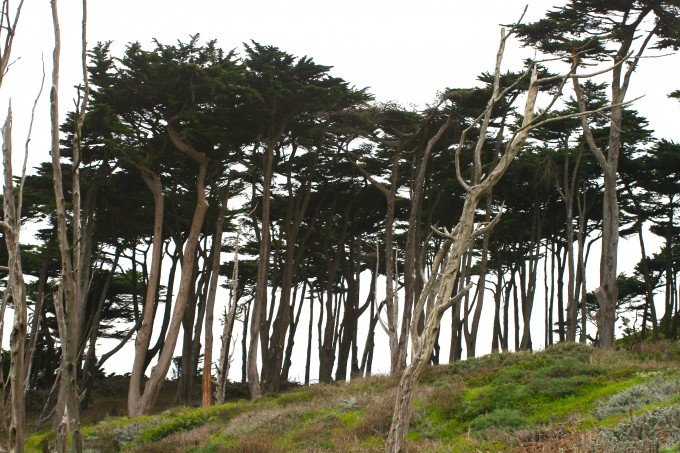
Beneath the trees were walking trails that wound through the groves and along the cliffs. People were visiting this area for many reasons that day; running, biking, photography, and exploring the ruins. There’s a 3-mile trail that loops back, but we didn’t have enough time to explore the whole thing. I definitely recommend allowing a few hours to explore the coastline and all the scenic views this area has to offer. Next time we come to San Francisco, we plan on allotting sufficient time to explore more in depth.
Once we we parked and adequately dressed for the cold, we headed down to the Sutro Bath ruins. There’s a steep staircase that took us from the bluffs down to sea level.
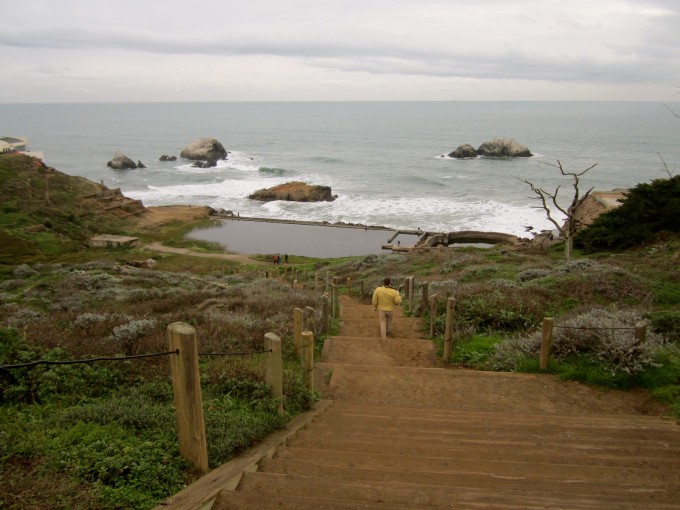
Note: It’s not a walk for the easily fatigued, or those with physical restrictions.
The concrete foundations and walls are accessible to walk on. Pets were allowed so it was great to take Lassie with us down to the waters edge.
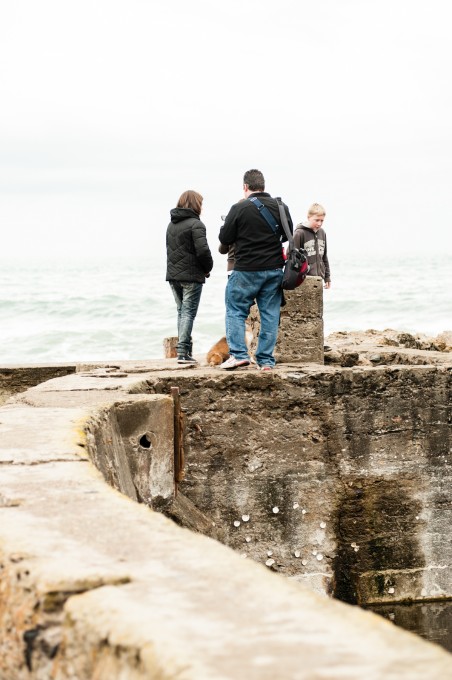
The waves were crashing on the rocks nearby, creating a picture perfect setting, in spite of the chill in the air.
Looking out at the mountains and trees beside us, the water and rocks in front of us, it felt peaceful.we could really sense the history of an era gone by- a time when this place entertained many more guests than the few of us that were there that day.
I can definitely see why in the 1920′s it was selected as a spot to put a bathing house. In it’s heyday it was a glass enclosure with 6 sea and fresh water pools indoors.
Off to one side of the cliffs is a cave, which the kids were thrilled to explore. I found out later that it’s where they housed a turbine to pump sea water into the 6 salt bath enclosures.
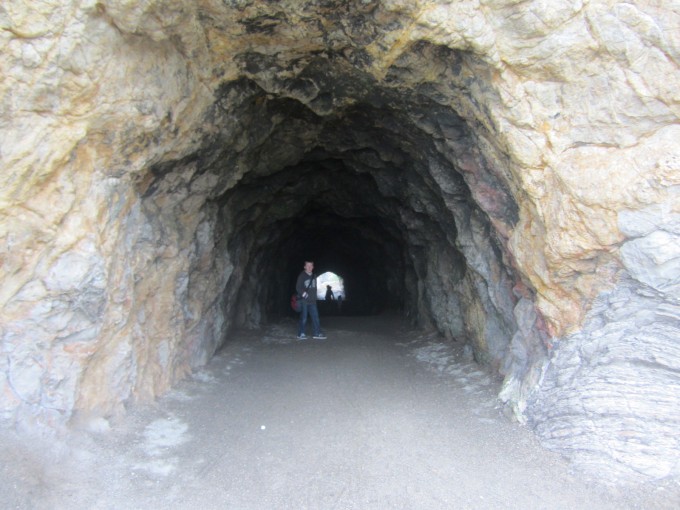
A dirt and asphalt path took us up the side of the cliff so we could get a panoramic view of the bay. If the weather had been clearer, I’ve been told you can see the Golden Gate Bridge from here.

It’s always great when I can find a place that everyone in the family enjoys, and hiking around Lands End was definitely one of them.
There were many photogenic spots, and Hannah & Avery had a great time practicing their photography skills.
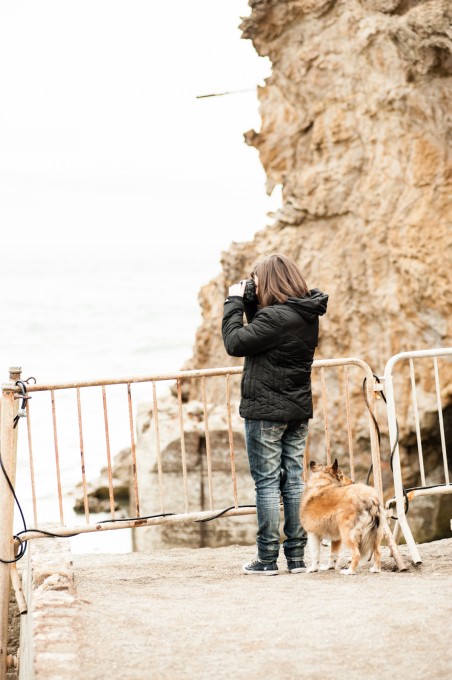
Hayden loved hiking the boulders and throwing rocks out into the ocean. He climbed up the mountainsides and had a great time exploring.
I was pleased to see that it was a pet- friendly place as well. Our dog, Lassie, was happy to run around the ruins and enjoy the scenery.
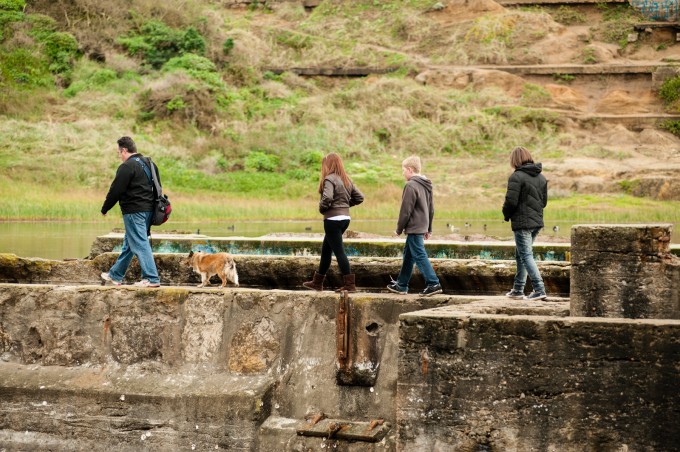
We saw many great sites in San Francisco while we were there, but one of my favorite was definitely the Sutro Baths and Lands End.
I can’t wait to come back in warmer weather, with a picnic lunch and a camera, and spend the afternoon soaking in the scenery.
I recommend you check it out the next time you are in San Francisco. And if you’re looking for a great photographer or local “tour guide”, be sure to call my friend, Spencer Harris, and tell him Watts in the World sent you!
Disneyland Holiday Time saving Tips: Part 2
As I mentioned in PART 1 of my two-part series on getting the most out of Disneyland at the holidays, it’s my favorite time of year to go. It will also be busy with other guests seeking some holiday cheer Disney-style.
As a former local resident who grew up near Disneyland, and married a former dancer in the parades, here’s my second list of suggestions on how to get the most out of your holiday visit to the park, and avoid the crowds as much as possible.
Tips #1-5 in my Part 1 can be viewed HERE
7 more tips for beating the crowds at Disneyland:
1. Visit in the middle of the week-
Weekends can be twice as busy as weekdays, and up to three times as busy if it’s a long weekend holiday. Tuesday, Wednesday and Thursdays are the least crowded.
2. Plan and prepare your kids for shopping-
Most attractions have a gift shop at the end of each ride. If you spend just 10 minutes in each shop, over the course of the day you’ve wasted at least an hour or more. Plus, there’s the whining and potential meltdowns your kids will have when they see something they want and can’t buy right then. When our kids were little we had discussions before coming to Disneyland about how we weren’t going to look or shop until the end of the day. We avoided the tantrums and stress, which helped us to make smooth transitions from ride to ride. Then later, if you wish, reserve the last 30 minutes of your evening for souvenir shopping as you head out of the park.
3. Go on rides during parades-
This might sound sacrilegious to Disney die hard fans, but if your kids have already seen it, or aren’t interested, then skip it. Or go the just the evening parade later when your kids are tuckered out from the rides anyways. We’ve found that the lines to the popular rides are a little shorter when people line the streets to watch the parade. Take advantage of this reprieve if you can.
4. Buy fast passes-
If you don’t want to miss the parade, you have limited time at the park, or you just hate waiting in lines, I suggest you buy the fast pass. While it costs more, your sanity and enjoyment of the park might just well be worth the price.
5. Pack water & snacks-
Most people forget to calculate the cost of buying drinks and snacks throughout the day, and I’ve seen friends easily spend $100 just trying to keep their families hydrated and stave off cranky kids. Besides the exhorbent cost of snacks, there’s the time wasted waiting in long lines just to get a $4 churro. My suggestion? Bring a small backpack to carry your family’s favorite snacks in. I usually get a locker and put 3-4 frozen water bottles in it, and then put 2 in my pack along with the snacks. The kids take turns carrying it, and we go back to the locker to change out the water bottles later in the afternoon. You might not need as many in the winter, but it’s nice to know you have them and it didn’t cost you much to store them.
6. Purchase a multiple day pass-
If you have the ability to come for more than a day, buy a multi-day pass. If it’s your first time, or if it’s the first time you brought kids, you will want more than a day to see everything. This allows you to slow down and enjoy yourself and the extended time. No need to show up right when it opens, skip the parade, or feel hurried.
7. Stay at Disney hotels-
As a bargain shopper, I used to avoid staying on the property, and chose to drive in each morning from a less expensive hotel in the vicinity. However, the time and cost of parking, versus the easy tram ride from a Disney hotel, ate into my “savings” quite a bit. My greatest reason to stay as close as possible to the park is that I could bring the kids back to the hotel for a few hours to nap, rest, play in the pool, etc. and then easily shuttle ourselves back after dinner. If you can swing it, do it. It’s worth having your options open.
I hope these 12 tips will help you enjoy Disneyland during the holidays. If you have any other time-saving tips, I’d love to hear them!
(Check out Part 1 for 5 more of our helpful ideas.)
It’s been a few years since we’ve been, and we will be going to Disneyland in a few weeks ourselves to enjoy the Christmas season. We’ll post pictures and more tips from our trip, so check back to see them!
What’s new at the Denver Zoo
With 3 kids who love animals, we’ve spent more time at zoos in the past decade than most people spend in their lifetime. Currently our oldest daughter is even a docent- volunteer at our local zoo in Utah. So when we got the chance to visit the Denver Zoo, we couldn’t pass it up. Yes, most zoos house just about the same varieties of animals, but we soon discovered Denver has some unique elements that are pushing the boundaries and setting new standards for zoos across the nation. Stimulating, naturalistic environments and eco-friendly operations are just a few of the advances the Denver Zoo is committed to mastering this year. This level of dedication isn’t new to the zoo, in fact, it began over a 100 yrs. ago when the zoo was initially created.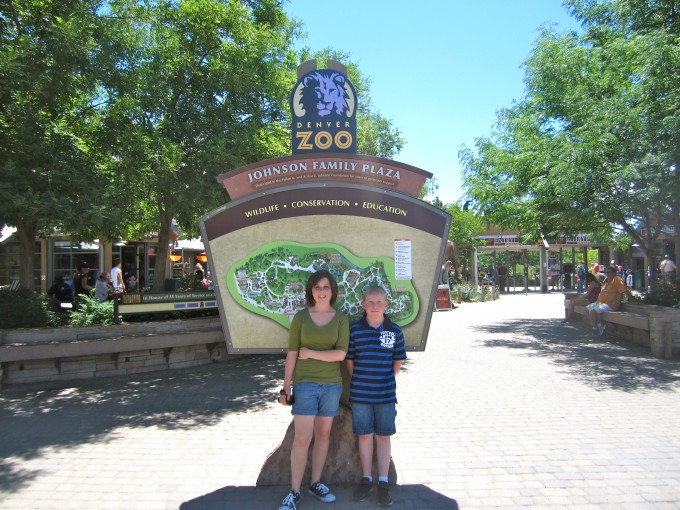
It all began with a special gift to the mayor of Denver back in 1896, a black bear, named Billy Bryan. That was the humble beginnings of what is today one of the most popular zoos in the United States, the Denver Zoo.
What makes this 80-acre facility located in the center of City Park of Denver so unique is the how cutting edge and forward thinking it’s been since its inception. It was the first American zoo to use naturalistic habitats, that was over 100 years ago. Now, it’s utilizing trash and animal waste to power portions of the zoo and create one of the greenest zoo environments in the world. This zoo has consistently been a trailblazer in advancing education and advocacy for animals, and it was a pleasure to see it up close during our visit.
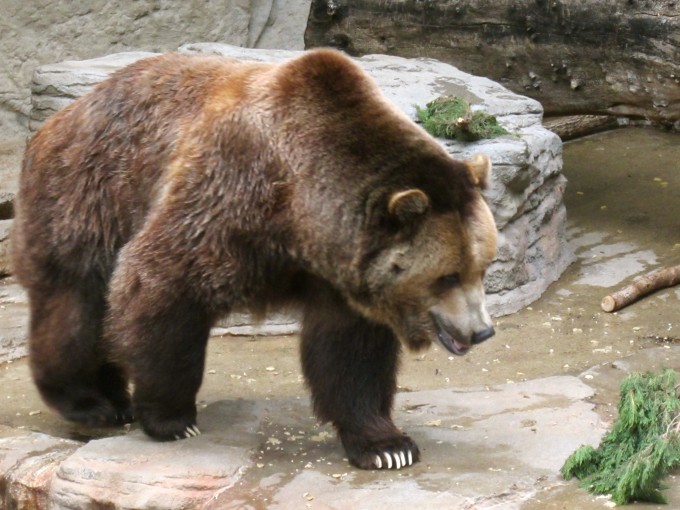
Did you know that when you visit the bear exhibit you are seeing a national historic landmark?
Bear Mountain made history by becoming the first naturalistic habitat of its kind in North America. Its construction was based on giant plaster casts of rock outcroppings from an area near Morrison, Colorado, and was designed to simulate the animals’ natural habitat. It was built over 100 years ago, and still houses animals today.
The award winning Predators Ridge
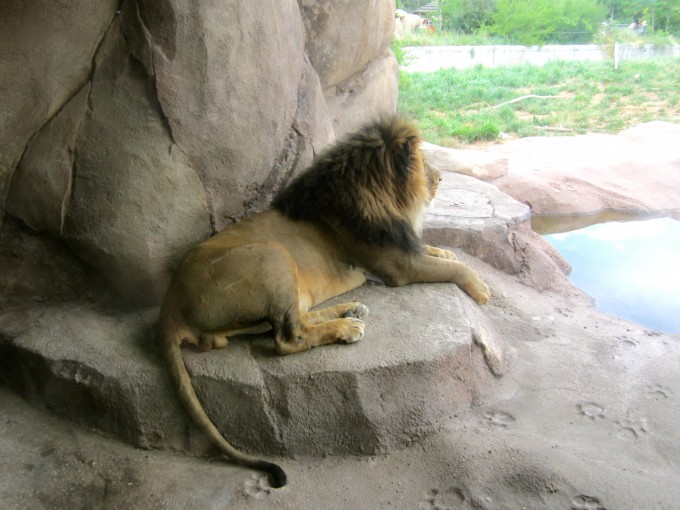
Another example of advances the Denver Zoo is making in the zoo industry is Predator Ridge. Predators Ridge is an example of what accredited zoos nationwide are trying to achieve – larger, more naturalistic and educational exhibits. This exhibit features 10-foot tall mounds for lions to survey their surroundings, electric hot rocks for warmth and a separate maternity den for mothers and future cubs to enjoy. Other native animals like hyenas are rotated through the enclosure to give the lions a more enriching environment. Because of it’s realistic nature this exhibit received awards from the AZA, and remains one of the highlights not to be missed when you visit.
The brand new Toyota Elephant Passage
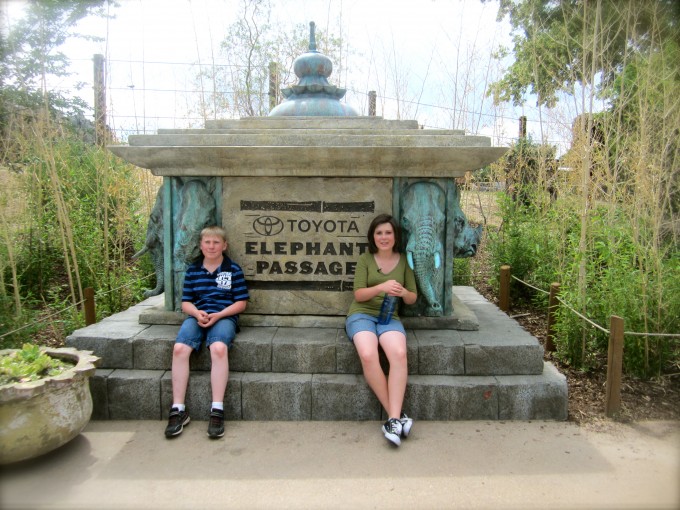
By far, the biggest and most impressive exhibit is the new Toyota Elephant Passage that opened June 2012. It houses 3 elephants and many other Asian species on the 10 acre property. It’s set up in a manner that allows the elephants to rotate through 3 different spaces, giving them a change of scenery and stimulation and freedom to roam that is unprecedented.
Besides the positive impact this new exhibit has on the animals, it’s having a positive effect on the environment as well. The new Toyota Elephant Passage turns human trash and animal waste into energy. The innovative gasification system will convert more than 90 percent of the zoo’s waste into usable energy to power the exhibit, eliminating 1.5 million pounds of trash currently going to landfills annually. Hopefully their example of how to create the best possible environment for the elephants, and save energy doing it will be an example other zoos will follow.
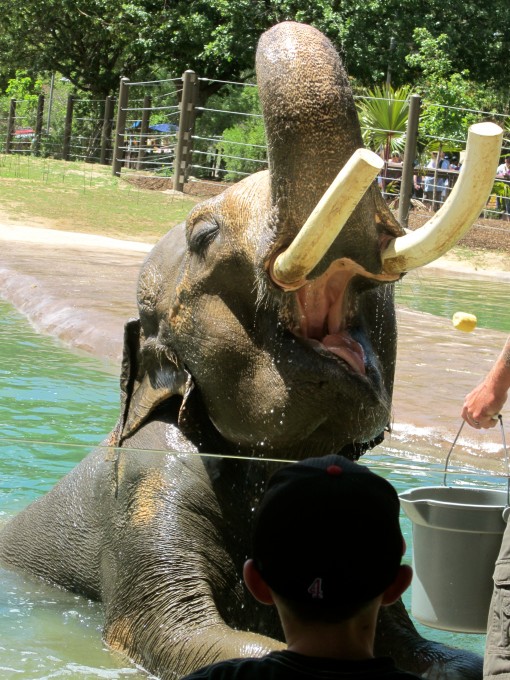
Quick Tips for your visit:
- Go early- The animals are usually more active in the early morning and early evening, so if you want to see them moving around, get there as soon as it opens.
- Map out the live shows first- Some of the animal shows, feedings or live demonstrations are held only once per day, so arrange a plan that ensures you get to see them, and fill in the time between shows with exhibits that are open all day long.
- Feeding Lorikeets- If you’d like to experience the fun of feeding lorikeets from your hand, and have them land on various parts of your body, do this early in the day. They are hungry in the morning, but after eating from the hands of numerous visitors, they are full by the afternoon. My kids loved this when they were little, and it makes for a great photo opportunity as well.
- Stay cool & hydrated- While there are some shady areas to rest and eat a picnic lunch, the majority of the paths are not shaded. Likewise, the sea lion show is in direct sunlight, and there’s no seating- you stand while watching it. Be prepared with hats, sunglasses, perhaps even an umbrella if you are senstive to the sun. Water bottles are $2.50 a piece in the zoo, and you’ll probably need to drink several during the day so plan that into your budget, or bring your own water bottles and refill them as needed.
- Be kind to your feet- As in most zoos, there’s several hills to walk throughout the zoo, and it’s a fairly big distance from one side of the park to the other. Be kind to your feet and wear proper walking shoes. It pains me to see women walking from one exhibit to the next, clearly uncomfortable in their high heels. Forgo making a fashion statement and enjoy your time with the animals.
- Take advantage of the Education available- The zoo’s website has an abundant amount of information available to prepare you for your trip. There’s guides to animal conservation, educational programs for teachers and students, and a teen program for those interested in more in depth knowledge of animals.
So as you can see, if you are in the Denver area, the Zoo is worth the day trip to explore it. It has a lot to offer both young and old, animal lover and environmentalist alike.
Have you been to the Denver Zoo? What was your experience like? What’s your favorite animal exhibit? Leave your thoughts in the comments below~ we’d love to hear from you!
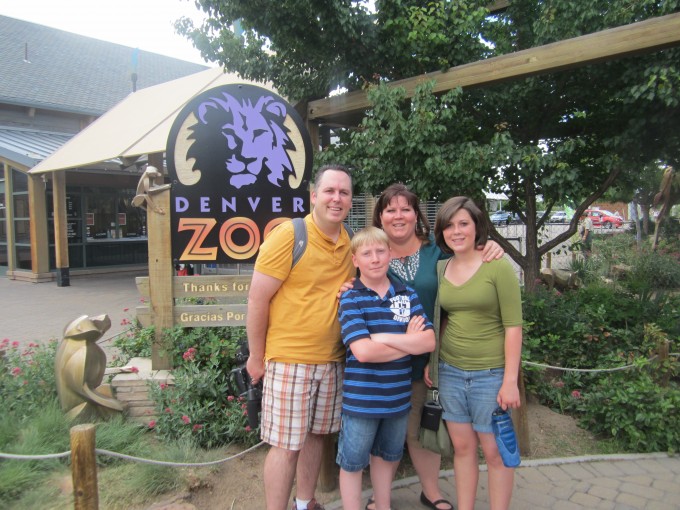
We are grateful to the Denver Zoo staff for their hospitality, and to Visit Denver for arranging the opportunity.
Water World: How to Beat the Heat in Denver, Colorado
Our family LOVES water parks! Since Water World was named one of the Top 10 Water Parks by the Travel Channel, we were anxious to experience it. A few weeks ago we were in Denver, Colorado for the Travel Bloggers Exchange conference, and we jumped at the chance to check it out. Having the opportunity to cool off at one of America’s largest family water parks, just as summer is starting to heat up, was perfect. With over 64 attractions and slides to choose from, we knew we were in for a day of fun.
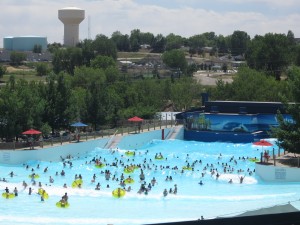
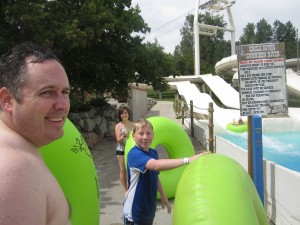
There is a great section for small children in the Wally World and Big Top play areas that I would’ve loved when my kids were little. Since they are teens now, we headed straight over the thrill rides. Dino enjoyed racing Hannah and Hayden down the Turbo Racer, and being swished around like a toilet bowl in the Spacebowl. The Skyline Speed Slide is probably the biggest thrill, a 6 story plunge straight down. You can see the slide in the background here.
The newest thrill ride, The Mile High Flyer, opened just this month. Unfortunately it wasn’t open yet when we visited, but it sure appears to be the most cutting edge water ride to date. It’s the first hydromagnetic water coaster in the Rockies, which means the ride can ascend, not just descend with gravity, like regular water rides. I am excited to go back and try this one out!
I think Dino ad Hayden’s favorite attraction was Riding the Wave. It’s a wave simulator that you try to ride on a boogie board. It looks easier than it is, and rarely could a person stay on for more than a few seconds. The boys attempted at least a dozen times, and had some spectacular wipe outs each time. Ladies, be careful, many bathing suit pieces came off or down during a wipe out.
Sore and cold, but not defeated, Hayden decided to take a break and move on to the lazy river for a little bit.
Other highlights: The Wave Pool is usually a family favorite, along with the Lazy River. I could spend the whole day just floating in a tube and staying cool.
A unique ride I’ve never seen before was the Zoomerang. It looks like a skateboard pipeline with a trickle of water flowing down the surface to create a hyrdoplane experience as your tube sails back and forth. Now that’s an intense thrill.
There are many positive features about Water World, but here are some of my top picks.
Features worth mentioning:
- Free, Tasty Water- The water fountains are equipped with filtered water that you can refill your own water bottles with, which eliminates the expense and waste created by buying bottled water.
- Parking is free. While many parks and events charge enormous fees for parking, you are spared the extra expense at Water World.
- Bring your own food. Picnics are welcome, so you are not held hostage to buying snacks, beverages and lunch inside the park. However, if you do eat at one of the food stands, the prices seemed within reason of what you’d pay at an amusement park. There are shaded picnic pavilions where you can eat your lunch
- The All-You-Can-Eat buffet and soda fountain option that starts at $11.99 for kids, and $13.99 for adults. If you plan on being there for a full day this would most likely pay for itself.
- Tube Rentals- During the busy season renting a personal tube is a timesaving option. It’s $5 for 1 or $8 for 2. There’s also a Valet service available to take your family tube (seats 4) to the top of the ride so you don’t have to carry it yourself. It’s $30 for the day. We didn’t use it, but worth looking into depending on your circumstances. If it’s not busy, personal tune rentals aren’t worth the extra expense, you can obtain them easily from the patrons exiting the ride.
- Cabana rentals- If your budget allows, another option would be a private cabana with free wi-fi and a cooler or refrigerator for your drinks. Sounds like a heavenly way to stay out of the sun and recoup between thrill rides.
Overall, the rides proved thrilling, the staff was friendly and helpful, and the facility and pools were clean. There was a great blend of families, and teen groups, and I felt safe and relaxed enough to let my kids wander around on their own for awhile. It’s open between Memorial and Labor Day, and if I lived closer, it would be worth getting a season pass for my kids to come with their friends.
I would recommend anyone wanting to beat the heat in Colorado to visit Water World in Denver and try out one of the best water parks in America!
For more information about Water World, go to: www.WaterWorldColorado.com
Disclosure: We were not paid for this review, however we were given free admission as part of Visit Denver’s promotion of the TBEX conference. The opinions expressed are our own, and not influenced by the park or it’s affiliates.


